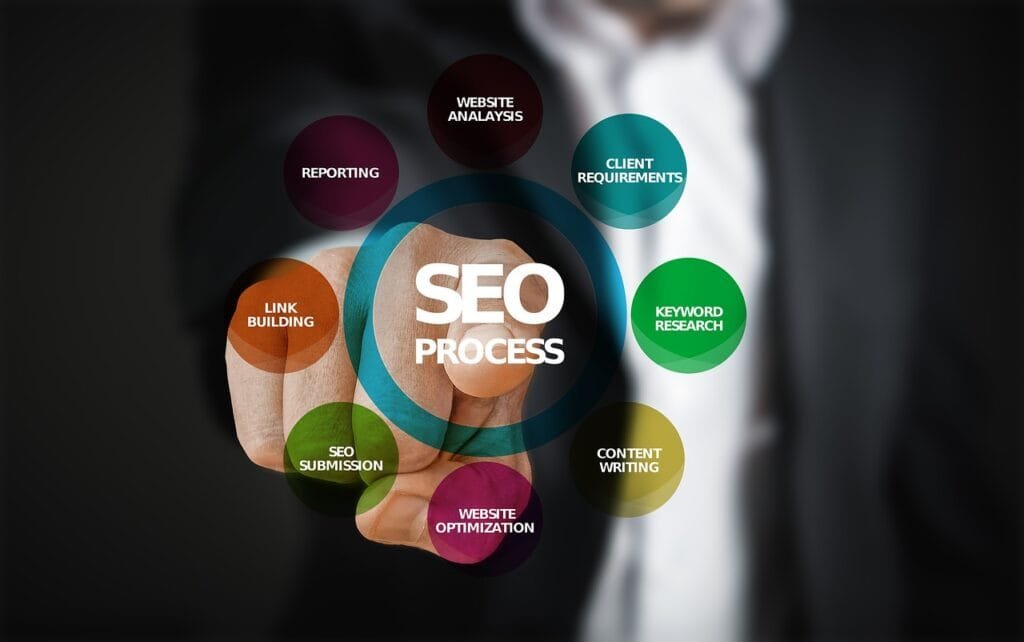This Article has been revised, edited and added to, by Poulomi Chakraborty.
- Understanding the Interplay: Content Marketing and SEO
- Laying the Groundwork: Integrative Budgeting for Content and SEO
- Effective Budget Distribution: Balancing Content Creation and SEO
- Measuring ROI: Analytics and Adjustments
- Staying Updated: Budgeting for Evolving Trends
- Leveraging User-Generated Content (UGC): Authenticity on a Budget
- Collaborative Efforts: Integrating PR with Content and SEO
- Content Distribution: Maximizing Reach and SEO Impact
- Community Building: A Content-SEO Powerhouse
- The Future of Content and SEO: Staying Agile in a Dynamic Landscape
- User Experience (UX) and SEO: Two Sides of the Same Coin
- Integrating Content and SEO with Broader Marketing Efforts
- Holistic Analytics: Measuring Success Across Content and SEO
- Diversifying Content for Global SEO: Localization and Translation
- Voice Search and Content Optimization: The New SEO Frontier
- Interactive Content and SEO: Engaging the Modern User
- The Rise of Video Content: SEO and Budgetary Implications
- User Intent and Content Creation: The Heart of Modern SEO
- Final Thoughts: Continual Learning and Adaptation in Content and SEO
Content marketing and SEO, when considered independently, are potent tools for startups. However, when synergistically combined, they can amplify a startup’s digital presence and drive tangible ROI. This deep dive explores the intertwined relationship between content marketing and SEO, providing insights on effectively budgeting for maximum ROI.
Understanding the Interplay: Content Marketing and SEO

Before diving into budgeting nuances, it’s crucial to understand the symbiotic relationship between content marketing and SEO.
Content Marketing: Beyond Just Words
Content marketing involves creating and distributing valuable, relevant, and consistent content to attract and engage a clearly defined audience.
Elements of Content Marketing:
- Blog Posts: Regularly updated articles that provide insights, answer user queries, or offer industry news.
- Infographics and Visuals: Visual content that simplifies complex data or concepts.
- E-books and Whitepapers: Detailed resources that delve deep into specific topics.
SEO: The Art and Science of Visibility
SEO encompasses tactics and strategies to optimize a website, ensuring it’s visible and ranks well on search engines for relevant keywords.
SEO Pillars:
- On-page SEO: Techniques applied directly within the website to improve its position in search rankings.
- Off-page SEO: Actions taken outside of the website, like backlink building, to optimize its search visibility.
- Technical SEO: Backend website optimizations ensuring search engines can effectively crawl, interpret, and index a site.
The Synergy
Content is the fuel that powers SEO. Without quality content, SEO efforts can’t truly thrive, and without SEO, even the best content might remain undiscovered.
Laying the Groundwork: Integrative Budgeting for Content and SEO
When budgeting for content marketing and SEO, a holistic approach can lead to more effective resource allocation.
Assessing the Current Landscape
Start by understanding where your startup stands in terms of content and SEO.
Initial Evaluation:
- Content Audit: Examine existing content to determine gaps, outdated information, or potential optimizations.
- SEO Audit: Assess the website’s current SEO health, including site speed, backlink profile, and keyword rankings.
Aligning with Business Goals
Determine the primary objectives your startup hopes to achieve with content and SEO.
Defining Objectives:
- Brand Awareness: If the goal is to increase brand visibility, investment might lean towards content creation and on-page SEO.
- Lead Generation: For lead generation, a mix of content types coupled with off-page SEO tactics might be more effective.
- Customer Engagement: Engaging existing customers could involve creating in-depth content resources and ensuring technical SEO optimizes user experience.
Effective Budget Distribution: Balancing Content Creation and SEO
Strategic budgeting is all about understanding the nuances of both content marketing and SEO, and distributing resources in a manner that maximizes ROI.
Investing in Quality Content Creation
Content is the backbone of any content marketing and SEO strategy. Quality here is paramount over quantity.
Key Areas for Content Budgeting:
- Content Writers and Creators: Whether hiring in-house writers, freelancers, or collaborating with content agencies, budgeting for quality writing is crucial.
- Visual Content: Infographics, videos, and other visual elements can enhance content but come with production costs.
- Research Tools: Platforms like BuzzSumo or SEMrush can offer insights for content creation, necessitating subscription costs.
Dedicating Resources to SEO
While stellar content is a must, ensuring it reaches the target audience requires dedicated SEO efforts.
Key Areas for SEO Budgeting:
- SEO Tools and Platforms: Tools like Ahrefs, Moz, or Google’s suite of SEO tools can offer valuable insights and facilitate optimization.
- Technical SEO Enhancements: This might involve investing in faster hosting, implementing structured data, or enhancing mobile optimization.
- Backlink Building: Strategies like guest posting, digital PR, or sponsored content can bolster a website’s backlink profile but come with associated costs.
Measuring ROI: Analytics and Adjustments

Investing in content marketing and SEO is only half the equation. Regularly measuring the impact and adjusting strategies is essential to ensure maximum ROI.
Key Performance Indicators (KPIs)
Defining clear KPIs can help startups gauge the effectiveness of their content and SEO investments.
Essential KPIs to Track:
- Organic Traffic: Monitor the number of visitors coming to the site via search engines.
- Conversion Rates: Assess how effectively the incoming traffic converts into desired actions, be it sign-ups, purchases, or other goals.
- Keyword Rankings: Track how specific target keywords are performing in search engine results pages (SERPs).
Analyzing and Iterating
Continuous improvement is at the heart of a successful content marketing and SEO strategy.
Periodic Reviews:
- Content Performance Analysis: Examine which pieces of content are driving the most engagement, traffic, or conversions.
- SEO Health Checks: Regularly audit the website’s SEO, identifying areas of improvement or emerging issues.
- Feedback Loops: Encourage feedback from users, team members, or external experts to continually refine strategies.

Related: Check out our free SEO suite

Staying Updated: Budgeting for Evolving Trends
The digital landscape, especially in the realms of content marketing and SEO, is perpetually evolving. For startups, staying updated and being agile in adapting to these changes is crucial.
Embracing Emerging Content Formats
As consumer preferences change, new content formats emerge. Being open to these changes can offer startups an edge.
Trending Content Types:
- Podcasts: Audio content, especially podcasts, have seen a surge in popularity, providing a unique way to engage audiences.
- Interactive Content: Quizzes, polls, or interactive infographics can enhance user engagement and drive traffic.
- Long-form Content: Comprehensive guides or long-form articles can position startups as industry authorities.
Adapting to SEO Algorithm Changes
Search engine algorithms, especially Google’s, are notorious for their frequent updates. Startups must be agile in adapting to these changes to maintain or improve their search rankings.
Staying Ahead of the Curve:
- Regular Algorithm Updates: Dedicate a portion of the budget for implementing changes necessitated by algorithm updates.
- Training and Workshops: SEO isn’t static. Regular training sessions ensure the team stays abreast of the latest trends and best practices.
- SEO Tools: Platforms that offer insights into algorithm changes or help in analyzing the website’s alignment with these changes can be invaluable.
Leveraging User-Generated Content (UGC): Authenticity on a Budget

In the realm of content marketing, UGC offers a unique blend of authenticity and cost-effectiveness. When optimized for SEO, UGC can also boost search rankings.
The Power of UGC
User-generated content, be it reviews, testimonials, or user-created videos, carries a sense of genuineness that resonates with audiences.
Benefits of UGC:
- Enhanced Trust: Potential customers often trust peer reviews or content more than brand-generated content.
- SEO Value: Positive reviews or UGC that incorporates target keywords can bolster SEO efforts.
Budgeting for UGC Initiatives
While UGC is inherently cost-effective, leveraging it effectively might require some budget allocation.
Key Budgeting Aspects:
- UGC Platforms: Tools or platforms that facilitate the collection, moderation, and display of UGC can come with subscription costs.
- UGC Promotions: Encouraging users to create content might require incentives, contests, or promotional campaigns.
- UGC Optimization: To maximize SEO benefits, user-generated content might need to be optimized, curated, or structured.
Collaborative Efforts: Integrating PR with Content and SEO
Public Relations (PR) and SEO, though distinct, can complement each other beautifully. When PR efforts align with content and SEO strategies, the ROI can be significantly amplified.
The Intersection of PR and SEO
Well-executed PR can generate buzz, enhance brand reputation, and drive traffic. When these efforts are SEO-aligned, the benefits multiply.
PR-SEO Synergy:
- Backlinks from Reputed Sources: PR mentions from high-authority sites can provide valuable backlinks.
- Content Amplification: PR can amplify the reach of content, driving more organic traffic and increasing the content’s SEO value.
Budgeting for PR-SEO Integration
Blending PR with SEO and content marketing might necessitate a revised budget approach.
Considerations for Budgeting:
- PR Agencies or Professionals: If outsourcing PR, choose agencies or professionals who understand the nuances of SEO.
- Content Creation for PR: Crafting press releases, media kits, or content specifically for PR campaigns can incur additional costs.
- Monitoring and Reporting Tools: Tools that track PR mentions, backlinks, or the SEO impact of PR efforts can be crucial but come with associated costs.
Content Distribution: Maximizing Reach and SEO Impact

Creating stellar content is just the beginning. Ensuring that the content reaches the target audience and drives organic traffic necessitates effective distribution strategies.
Understanding Content Distribution Channels
Different content types resonate better on different platforms. Knowing where to push content can significantly enhance its impact.
Key Distribution Platforms:
- Social Media: Platforms like Facebook, LinkedIn, or Twitter can drive significant traffic and engagement to content pieces.
- Email Newsletters: Regularly sending curated content to a subscriber list can keep the audience engaged and drive consistent traffic.
- Content Aggregators: Sites like Medium or Reddit can introduce the content to new audiences and potentially drive organic traffic.
SEO Implications of Content Distribution
Effective content distribution doesn’t just drive traffic; it can have direct and indirect SEO benefits.
SEO Benefits of Distribution:
- Increased Backlinks: The wider the content reach, the higher the chances of other sites linking back to it.
- Enhanced User Engagement: Content that drives engagement signals to search engines its quality and relevance, potentially boosting rankings.
Budgeting for Content Distribution
Effective distribution might require varied budget allocations, depending on the channels and tactics chosen.
Budget Considerations:
- Paid Promotions: Boosting content on social media platforms or running paid ad campaigns can ensure wider reach but incurs costs.
- Email Marketing Platforms: Tools like Mailchimp or SendinBlue can facilitate email content distribution but come with subscription fees.
- Content Repurposing: Turning a blog post into an infographic, video, or podcast can enhance distribution but might involve production costs.
Community Building: A Content-SEO Powerhouse
Building and engaging with a community can supercharge both content marketing and SEO efforts, driving loyalty, engagement, and organic reach.
The Value of Community in Content and SEO
A loyal community can become advocates for the brand, amplifying content reach and driving organic engagement.
Community-Driven Benefits:
- User-Generated Content: A vibrant community often produces content, be it reviews, testimonials, or discussions, boosting content volume and authenticity.
- Enhanced Trust Signals: Search engines value user engagement. A community-driven site with regular user interactions can send positive SEO signals.
Budgeting for Community Building and Engagement
Cultivating and nurturing a community might necessitate dedicated budget allocations.
Key Budget Areas:
- Community Platforms: Tools or platforms like Discourse or Vanilla Forums, which facilitate community discussions, can have setup and maintenance costs.
- Community Managers: Hiring community managers or moderators can ensure healthy community interactions and engagement.
- Community-Driven Content Initiatives: Encouraging community content through contests, promotions, or rewards might involve associated costs.
The Future of Content and SEO: Staying Agile in a Dynamic Landscape
The world of content marketing and SEO is ever-evolving, influenced by technological advancements, user preferences, and search engine algorithms.
Embracing AI and Automation
Artificial Intelligence (AI) and automation tools are revolutionizing content creation, distribution, and SEO.
AI in Content and SEO:
- Content Personalization: AI tools can analyze user behavior and preferences, delivering personalized content experiences.
- Automated SEO Audits: AI-driven platforms can quickly identify SEO issues or suggest optimizations, reducing manual effort.
Budgeting for Technological Advancements
Staying ahead of the curve in the realm of content and SEO might require investing in emerging technologies.
Budgeting Insights:
- AI and Automation Tools: Platforms leveraging AI for content or SEO can come with premium pricing.
- Continuous Training: The team needs to stay updated with technological advancements, necessitating budget allocations for training or workshops.
User Experience (UX) and SEO: Two Sides of the Same Coin

In recent years, the lines between UX and SEO have increasingly blurred. Google’s algorithm updates emphasize the importance of user experience, making it clear that for a website to rank well, it must also offer a stellar user journey.
The Nexus Between UX and Content
Content isn’t just about words on a page. How it’s presented, accessed, and interacted with plays a pivotal role in its effectiveness.
UX-Driven Content Enhancements:
- Readable Formats: Breaking content into headers, sub-headers, and bullet points enhances readability and user engagement.
- Interactive Elements: Integrating polls, quizzes, or interactive graphics can make content more engaging and user-friendly.
- Responsive Design: Ensuring content is easily readable and accessible across devices, especially mobile, is crucial for modern SEO and user satisfaction.
Budgeting for UX Improvements
Enhancing the user experience of content can lead to better engagement metrics, indirectly boosting SEO. However, it requires strategic budgeting.
Key UX Budgeting Areas:
- UX Design: Investing in UX designers or consultants can ensure the website and content are structured optimally for users.
- UX Testing: Tools or platforms that facilitate user testing, feedback collection, or heatmapping can provide invaluable insights but come at a cost.
- Technical Implementations: Implementing responsive designs, fast-loading pages, or interactive elements might involve development costs.
Integrating Content and SEO with Broader Marketing Efforts
For startups, resources are often limited. Ensuring that content marketing and SEO efforts align and complement broader marketing strategies can optimize resource utilization and results.
Content Marketing Beyond the Website
While the company’s website is a primary platform for content, exploring external platforms can amplify reach and SEO benefits.
Broader Content Platforms:
- Guest Blogging: Writing content for reputed industry platforms can drive referral traffic and provide valuable backlinks.
- Syndication: Sharing content on platforms like Medium or LinkedIn Pulse can introduce the brand to new audiences.
Aligning with Overall Marketing Campaigns
Content and SEO should not operate in silos. Integrating them with overall marketing campaigns can ensure consistent messaging and maximize impact.
Integration Strategies:
- Content Themes: If the broader marketing campaign focuses on a particular theme, the content strategy should echo that theme.
- Promotional Synergy: Content pieces can support promotional campaigns, providing in-depth information, testimonials, or user stories that ads or social media campaigns might tease.
Budgeting for Integrated Marketing
When content and SEO strategies seamlessly integrate with broader marketing efforts, budget allocations should reflect this synergy.
Budgeting Considerations:
- Cross-Platform Promotions: Promoting content through PPC campaigns, social media ads, or influencer partnerships might necessitate additional budget allocations.
- Content Creation for Campaigns: Crafting content tailored for specific marketing campaigns, be it launch promotions, seasonal themes, or awareness drives, can involve added costs.
Holistic Analytics: Measuring Success Across Content and SEO
In the world of digital marketing, data reigns supreme. To truly gauge the ROI of combined content marketing and SEO efforts, startups need a holistic approach to analytics.
Going Beyond Traditional Metrics
While metrics like organic traffic, bounce rate, or keyword rankings are crucial, a holistic view requires broader considerations.
Comprehensive Analytics:
- Engagement Metrics: Time on page, scroll depth, or interactions with content elements can offer insights into content’s effectiveness.
- Conversion Path Analysis: Understanding the user journey, from content discovery to conversion, can highlight areas of improvement.
- Sentiment Analysis: Assessing user comments, feedback, or reviews can offer qualitative insights into content and user experience.
Budgeting for Advanced Analytics Tools
Deep-diving into holistic analytics might require investments in advanced tools or platforms.
Analytics Budget Considerations:
- Premium Analytics Platforms: Tools like Google Analytics Premium or Adobe Analytics offer deeper insights than their free counterparts.
- Specialized Tools: Platforms that offer sentiment analysis, conversion path tracking, or heatmapping can provide specific insights but come at a cost.
- Analytics Personnel: Hiring or training personnel specialized in data analytics can ensure the data is not just collected but also effectively analyzed and acted upon.
Diversifying Content for Global SEO: Localization and Translation
As startups grow, tapping into global markets becomes a viable and often lucrative strategy. However, content marketing and SEO for a global audience bring their unique challenges and opportunities.
Embracing Content Localization
Localization goes beyond mere translation. It’s about adapting content to resonate with the culture, preferences, and nuances of a particular locale.
Localization Essentials:
- Cultural Nuances: Understand the traditions, festivals, and cultural sensitivities of a region to craft content that resonates.
- Local Trends and Preferences: Keeping a pulse on local trends or preferences can ensure content relevance and engagement.
SEO for Different Geographies
Different regions might have different search engine preferences, user behaviors, and keyword trends. Adapting SEO strategies to cater to these nuances is paramount.
Global SEO Strategies:
- Hreflang Tags: Ensure search engines serve the right content version to users based on their language or region.
- Local Link Building: Acquire backlinks from websites or platforms popular in the target geography.
- Keyword Localization: Merely translating keywords might not suffice. It’s essential to understand what terms locals use to search for particular products or services.
Budgeting for Global Content and SEO
Diversifying content and SEO strategies for a global audience requires dedicated budgeting, considering both creation and optimization costs.
Key Budgeting Areas:
- Translation and Localization Services: Professional services ensure content doesn’t just translate but truly localizes for the target audience.
- Multilingual SEO Tools: Platforms that offer SEO insights for multiple languages or regions can be invaluable in crafting effective strategies.
- Regional Marketing Research: Investing in market research can provide insights into local preferences, behaviors, and trends.
Voice Search and Content Optimization: The New SEO Frontier
With the rise of smart speakers and voice assistants, voice search is no longer a futuristic concept. It’s here, and it’s influencing SEO in significant ways.
Crafting Content for Voice Search
Voice searches differ from traditional text-based queries, often being more conversational and query-based.
Voice-Optimized Content Strategies:
- FAQs and Conversational Content: Structuring content in a question-answer format can cater to voice search queries.
- Long-tail Keywords: Voice searches tend to be longer and more natural-sounding. Integrating long-tail, conversational keywords can boost content’s voice search visibility.
SEO Implications of Voice Search
Voice search optimization is an evolving field, with search engines continually refining how they serve voice-based queries.
Voice Search SEO Considerations:
- Featured Snippets: Voice assistants often read out featured snippets in response to queries. Ensuring content is optimized for these coveted positions can enhance voice search visibility.
- Local Voice Search: Many voice searches are local in intent, like “pizza place near me.” Ensuring local SEO strategies cater to voice queries is crucial.
Budgeting for Voice Search Optimization
While voice search optimization builds on traditional SEO foundations, it might require specific investments.
Budgeting Aspects:
- Voice Search Analytics Tools: Understanding voice search trends, popular queries, or user behaviors might necessitate investments in specialized analytics platforms.
- Content Refinement: Adapting existing content to cater to voice search trends might involve content rewrites or additions.
Interactive Content and SEO: Engaging the Modern User
The modern internet user is not a passive consumer. Interactive content, which requires active user participation, can significantly enhance engagement and SEO metrics.
Exploring Types of Interactive Content
From simple polls to intricate interactive infographics, the spectrum of interactive content is vast.
Popular Interactive Content Forms:
- Quizzes and Surveys: Engage users while also gathering insights or feedback.
- Interactive Videos: Videos where users can click, choose, or interact in various ways.
- Calculators or Tools: Custom tools, like mortgage calculators for a real estate startup, can offer immense value and drive engagement.
SEO Implications of Interactive Content
Interactive content, given its engaging nature, can positively influence several SEO metrics.
SEO Benefits:
- Reduced Bounce Rate: Engaging interactive content can ensure users stay on the site longer.
- Increased Backlinks: Unique, valuable interactive content can attract backlinks from other sites, boosting SEO.
Budgeting for Interactive Content Creation
Creating interactive content can be more resource-intensive than traditional content forms but offers substantial ROI potential.
Budget Considerations:
- Development Costs: Complex interactive content, like tools or interactive videos, might involve development costs.
- Promotion: Given its unique nature, interactive content might benefit from dedicated promotional efforts, necessitating additional budget allocations.
The Rise of Video Content: SEO and Budgetary Implications
With increasing internet speeds and changing user preferences, video content has swiftly risen to be a dominant form of online content. For startups, understanding its SEO value and budgeting accordingly is paramount.
Embracing Video Content in Strategy
Video content, given its engaging and visually appealing nature, can cater to a broad spectrum of user queries and intents.
Why Video Content Matters:
- Higher Engagement Rates: Videos tend to engage users more than text or images, leading to longer page visits and better engagement metrics.
- Versatility: Videos can educate, entertain, inspire, or promote, making them versatile content tools.
SEO Potential of Video Content
While videos are primarily about user engagement, they carry substantial SEO potential.
Video SEO Benefits:
- Rich Snippets: Videos can get featured in rich snippets on search engine results pages, enhancing visibility.
- YouTube SEO: Google owns YouTube, and video results from YouTube often feature prominently in SERPs.
Budgeting for Video Content Creation and Optimization
While video content can offer substantial ROI, it often requires a higher initial investment compared to other content forms.
Key Budgeting Aspects:
- Production Costs: Quality video content might require investments in equipment, editing software, or even hiring professionals.
- Video SEO Tools: Platforms like Tubebuddy or VidIQ can help in optimizing videos for search, incurring subscription costs.
- Promotion Costs: To maximize reach, video content might benefit from paid promotions on platforms like YouTube or Facebook.
User Intent and Content Creation: The Heart of Modern SEO
Search engines, especially Google, have become incredibly sophisticated in understanding user intent behind queries. For startups, aligning content creation with user intent is a crucial SEO strategy.
Deciphering User Intent
Not all search queries are the same. Understanding the motive or intent behind a query can guide content creation.
Types of User Intent:
- Informational: The user seeks information, e.g., “how to water succulents.”
- Transactional: The user intends to buy or transact, e.g., “buy running shoes online.”
- Navigational: The user wants to visit a specific site or page, e.g., “OpenAI website.”
Crafting Content Aligned with Intent
Once user intent is deciphered, content can be tailored to match and satisfy that intent.
Content Creation Insights:
- Answering Queries: For informational intent, create content that provides clear, comprehensive answers.
- Clear CTAs: For transactional intent, ensure content has clear calls-to-action guiding users to the next steps.
Budgeting with User Intent in Mind
When user intent guides content strategy, budget allocations might need adjustments.
Budget Considerations:
- Keyword Research Tools: Platforms that offer insights into user intent behind keywords can be invaluable, incurring subscription costs.
- Content Formats: Different intents might resonate with different content formats. For instance, transactional intent might benefit from video product demos, necessitating video production costs.
Final Thoughts: Continual Learning and Adaptation in Content and SEO
The domains of content marketing and SEO are in a state of perpetual flux, driven by technological advancements, evolving user preferences, and ever-changing search engine algorithms. For startups, the key lies not just in strategic budgeting but in fostering a culture of continual learning and adaptation.
By staying updated, testing different strategies, analyzing results, and pivoting when necessary, startups can ensure their content marketing and SEO efforts yield sustained and impressive ROI.
Read Next
- Top Keyword Research Tools Every Startup Should Use
- Beginner’s Guide: How to Conduct Effective Keyword Research
- Importance of Keyword Research in Startup SEO Strategies
- The Ultimate Guide to Keyword Research for Startup SEO
- How to Leverage Social Media Reviews for SEO





















Comments are closed.